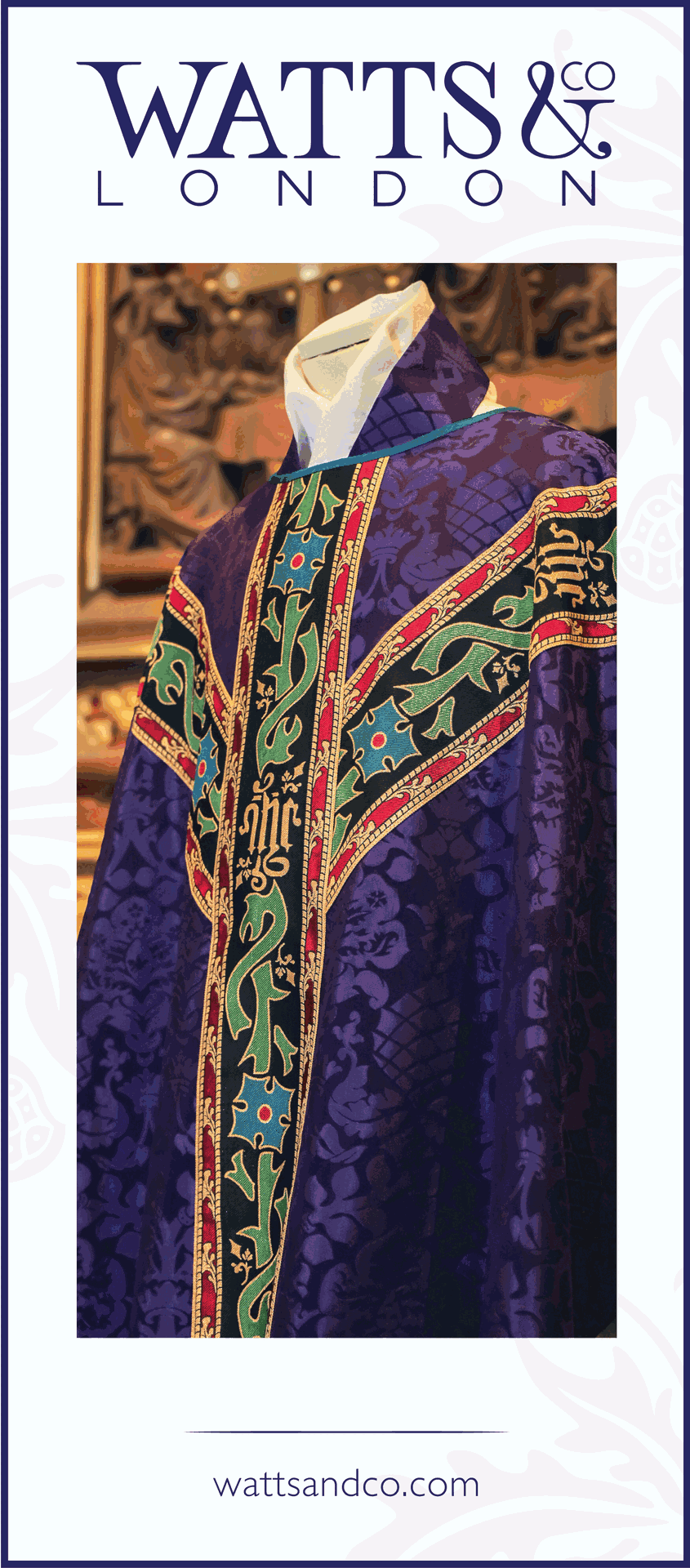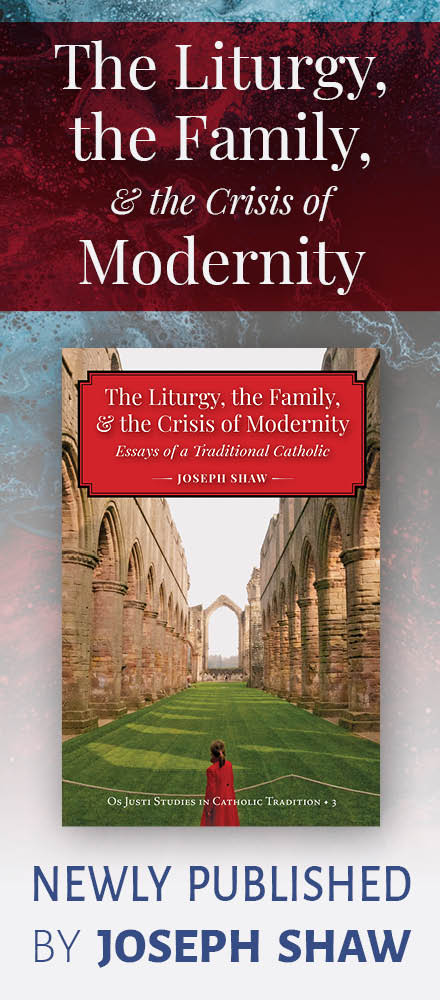[I saw this and thought readers would find it of interest.]
Norbertine Gregorian Chant
Music between Heaven and Earth
A reader should not be surprised to learn that the Norbertine Order has its "own" Gregorian chant. As any other ancient Order, that of Saint Norbert also has its traditions and liturgical practices.
From its earliest beginning, the Norbertine Order gave special care to liturgy and daily prayer in community. Besides pastoral activities, which the Norbertines always had, the care for liturgical celebrations has always been very important.
Saint Norbert and his successor, Abbot Hugo, were very attached to a certain uniformity within the growing Order. About eight years after the foundation in Premontre, Norbert left France and was appointed Archbishop of Magdeburg (1126). At that moment, the number of monasteries in France, the Low Countries and Germany was already 41! A century later there were some 1,500 throughout Europe! Unity in matters of liturgy, rule of life, clothing, chant and obedience to the statutes was therefore really necessary to avoid splitting.
But where does "Norbertine Gregorian" come from? Neither Norbert nor Hugo were composers. Long before there existed any official Roman Liturgy, a number of flourishing Christian communities in Western Germany and Gaul had their own "proper" rites, essentially consisting of Greek and Palestinian elements. Any bishopric or monastery of a certain repute had its own liturgical books for Eucharistic celebration, with prayers, lectures and chants. It is therefore highly presumable that Saint Norbert, besides prayers and lectures, also took over chants from the diocese of Laon, as Prémontré was part of it. It is nearly sure that those liturgical chants must have been fixed, together with other prescriptions, for all establishments of the Order. An ancient version of the Statues (dated 1143) devotes explicitly a whole chapter to liturgical books. It actually says that "missal, lectures, gradual, antiphonary, hymns, psalms, rule and liturgical calendar" must be identical with the Order. Versions of the Statutes from later centuries all contain this strict provision. Even certain papal documents stress this obligation of unity and abbots were regularly encouraged to maintain these valuable practices. At the yearly General Chapter which, at first was held each time in Prémontré, practice could be compared to and contrasted with the existing prescriptions.
The differences heard in Norbertine Gregorian are not exclusively due to bad copying in the scriptoria; musical connoisseurs once stated that in the many remarkable melodies proper to the Norbertine repertory, adding one sole note or a group of notes could considerably enrich the melody, as it was often inspired by the desire for beauty and an ingenius sense of creativity.
Gregorian Chant was always called "The unsurpassable summit of unisonous music and an irreplaceable vivifying principle within the Western Christian liturgy."
The Second Vatican Council preserved this view, even if the Constitution of the Holy Liturgy (4.XII.1964) issued a lot of directives and possibilities aiming at a liturgy celebrated in a more popular way and in the mother tongue. After twenty years of experiments and composition, it is somehow felt that Gregorian has nothing to do with monastic music belonging to the period of the triumphant church, nor with a chant that people don't understand nor feel drawn to. On the contrary: The renewed interest that comes up here and elsewhere indicates that we need to reevaluate Gregorian Chant as liturgical music and a precious culture-bearer. Many are tired of those masses with pop and beat songs, all failures that soon lose their attraction. Priests and pastoral workers progressively realize that those "renewals" they introduced too fast and unconsidered, don't give the results they expected.
The Gregorian Abbey Choir of Grimberg Abbey, that for 35 years now takes part in High Mass every Sunday at 10 a.m in the Abbey Church, wishes to prove that the beauty of Gregorian is eternal. Its beauty is, in the first place, an inner beauty, providing a spiritual value that enables both singer and listener to reach for God. Many other forms of music will be, no doubt, more beautiful than Gregorian, but in liturgy esthetics is not the object.
Gregorian has come a long way. In the eighth century, notes were written down on paper: up to then, music was transmitted orally. How music was performed when it wasn't written down can't be reconstructed, but there are many speculations. After the beginning history of Gregorian, the first marks were put above the texts in the scriptoria of East-and West Frankish cloisters, which we commonlycall "neumes." The monks of that time must have passed whole days copying these systems, having breaks only for singing lessons and prayer. The later development of a Western note writing system is actually a big handicap when reconstructing our former music history. The 13th Century marks the beginning of a decline through the increasing popularity of polyphonic music and the worldly theater music that were introduced into the churches and spoiled the melodies.
The restoration of Gregorian is mainly due to the monks of theFrench Abbey of Solemes in the second half of the last century. Abbot Gueranger (1875), who wanted to restore monastic life, asked hisconfreres to gather ancient manuscripts in order to restore through comparative studies the melodies in their original purity. At the beginning of this century, there was still a lot of work to do, and only in 1907 were their efforts crowned with the issue of the "Graduale Romanum." Within the Norbertine Order a workshop of Gregorian experts issued the "Graduale Premonstartense."
After the Second Vatican Council , the reform of the calendar and liturgical books (i.e. missal and lectionary) required a number of changes and adaptations to the Graduale Romanum. With the last issue in 1979 - known as the Graduale Triplex - the concern had really been to maintain the treasure of Gregorian chant in its original purity (Constitution of the Holy Liturgy, nr. 114).
Grimberg Abbey, founded by Saint Norbert around 1128, maintained its Gregorian tradition, even if several times throughout the centuries, the abbey was looted, burned and destroyed. The phoenix gracing the abbey's escutcheon, always rose from his ashes. In a similar way, Gregorian here has always persisted through trials and tribulations, and remains a distinctive part of the Norbertine tradition.
The Grimberg Abbey Choir, under the Direction of Dr. Gereon van Boesschoten, O. Praem., has made six CD Albums of Norbertine Chant, under the Eufoda label:
Eufoda 1119
Eufoda 1124
Eufoda 1125
Eufoda 1181
Eufoda 1280 "Maria" (1998)
Eufoda 1308 (2001) Chant from the Liturgy for Corpus Christi
Premonstratensian Rite Chant
Friday, November 03, 2006
Premonstratensian Rite Chant
Shawn TribeMore recent articles:
Two Upcoming Events from the Durandus InstituteGregory DiPippo
Our friend James Griffin of The Durandus Institute for Sacred Liturgy and Music wishes all our readers a joyous Easter season, by presenting two opportunities, at least for those in southeast Pennsylvania, to celebrate.First, this coming Sunday at 5pm, there will be a solemn Vespers in the traditional Latin rite for the Second Sunday after Easter a...
Letter to a Maximalist Music Director in a Minimalist WorldPeter Kwasniewski
Auguste Danse, Study of Three Singers (detail)The following is based on a real letter.Dear Friend,I’m sorry to hear that you’re experiencing some “ups and downs” with regard to the liturgy there, though it’s hardly surprising in a way. Your diocese is not well known for liturgical propriety or taste, and, beyond that, priests mostly have control ov...
The Tomb of St Peter Martyr in Milan’s Portinari ChapelGregory DiPippo
Here are some great photos from our Ambrosian correspondent Nicola de’ Grandi of the Portinari Chapel at the Basilica of St Eustorgio in Milan. They were taken during a special night-time opening made possible by a new lighting system; as one might well imagine, the Italians are extraordinarily good at this sort of thing, and more and more museum...
Recommended Art History and Artistic Practice Text Books for Homeschoolers... and Everyone Else Too!David Clayton
I want to recommend the Catholic Heritage Currricula texts books to all who are looking for materials for courses in art history, art theory and artistic practice at the middle-school or high-school level. These books present a curriculum that combines art history, art theory, and a theory of culture in a Catholic way. Furthermore, they provide the...
Launching “Theological Classics”: Newman on the Virgin Mary, St Vincent on Novelty & Heresy, Guardini on Sacred SignsPeter Kwasniewski
At a time of turmoil, nothing could be better or more important than rooting ourselves more deeply in the Catholic tradition. One of my favorite quotations is by St. Prosper of Aquitaine (390-455), writing in his own age of chaos: “Even if the wounds of this shattered world enmesh you, and the sea in turmoil bears you along in but one surviving shi...
Low Sunday 2025Gregory DiPippo
With his inquisitive right hand, Thomas searched out Thy life-bestowing side, O Christ God; for when Thou didst enter while the doors were shut, he cried out to Thee with the rest of the Apostles: Thou art my Lord and my God. (The Kontakion of St Thomas Sunday at Matins in the Byzantine Rite.)Who preserved the disciple’s hand unburnt when he drew n...
The Easter Sequence Laudes SalvatoriGregory DiPippo
The traditional sequence for Easter, Victimae Paschali laudes, is rightly regarded as one of the greatest gems of medieval liturgical poetry, such that it was even accepted by the Missal of the Roman Curia, which had only four sequences, a tradition which passed into the Missal of St Pius V. But of course, sequences as a liturgical genre were extre...
The Paschal Stichera of the Byzantine Rite in EnglishGregory DiPippo
One of the most magnificent features of the Byzantine Rite is a group of hymns known as the Paschal stichera. These are sung at Orthros and Vespers each day of Bright Week, as the Easter octave is called, and thenceforth on the Sundays of the Easter season, and on the Leave-taking of Easter, the day before the Ascension. As with all things Byzantin...
Medieval Vespers of EasterGregory DiPippo
In the Breviary of St Pius V, Vespers of Easter Sunday and the days within the octave present only one peculiarity, namely, that the Chapter and Hymn are replaced by the words of Psalm 117, “Haec dies quam fecit Dominus; exsultemus et laetemur in ea. – This is the day that the Lord has made; let us be glad and rejoice therein.” In the Office, this...
Summer Graduate-Level Sacred Music Study - Tuition-freeJennifer Donelson-Nowicka
The May 1st application deadline is approaching for summer graduate courses in sacred music at the Catholic Institute of Sacred Music. Graduate-level study structured for busy schedulesIn-person, intensive course formatsAffordable room & boardFree tuitionLearn more and apply here.Courses:Choral InstituteComposition SeminarOrgan ImprovisationIn...




















